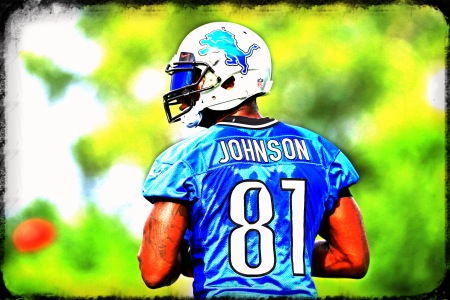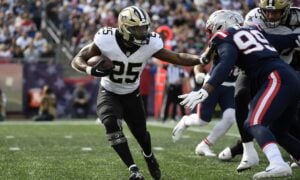Advanced Draft Preparation: An In-Depth Study on Wide Receiver Drafting
“So in war, the way is to avoid what is strong and to strike at what is weak.” – Sun Tzu (The Art of War)
 As part of our on-going series about advanced draft preparation, we will delve deeper into the drafting habits observed in Dynasty League Football’s mock draft series hosted by DLF’s own, Ryan McDowell’s (@RyanMC23). This article will focus solely on the wide receiver position and what trends or behaviors a start-up draft owner may be able to exploit. For background on the methodology and research conducted to obtain these results please check the first article in this search entitled “Advanced Draft Preparation – Annihilating Herd Mentality.” Here are all the articles in the series thus far:
As part of our on-going series about advanced draft preparation, we will delve deeper into the drafting habits observed in Dynasty League Football’s mock draft series hosted by DLF’s own, Ryan McDowell’s (@RyanMC23). This article will focus solely on the wide receiver position and what trends or behaviors a start-up draft owner may be able to exploit. For background on the methodology and research conducted to obtain these results please check the first article in this search entitled “Advanced Draft Preparation – Annihilating Herd Mentality.” Here are all the articles in the series thus far:
Advanced Draft Preparation – Annihilating Herd Mentality
Advanced Draft Preparation – An In-Depth Study on Quarterback Drafting
Advanced Draft Preparation – An In-Depth Study on Running Back Drafting
Please note the following:
- Each positional article should be viewed as a self-contained work that relates only to the original piece
- Each positional piece should not be viewed as being compatible with other positional pieces.
- The strategies laid out in each positional piece are specific only to the position being examined and a strategy in one positional piece may run counter to a separate strategy in a different position piece.
- Each positional piece will seek only to maximize the value of the subject position.
Welcome to the fourth part of the five part “Advanced Draft Preparation” series. In this piece, we will examine how, when and why to draft wide receivers. We’ve seen strategies in the previous pieces that suggest drafting quarterbacks in a unique way and also that advocate drafting running backs as high and often as possible. In this piece, we will examine a much different strategy for the position of wide receiver.
Without question, wide receiver is the deepest position. More wide receivers are taken in your typical draft than any other position and nearly every position combined. On average, a wide receiver is taken every 2.5 picks, or put another way, in your typical first ten rounds of a draft where 120 players are selected, 48 of those players will be wide receivers.
With such an abundance, one would assume wide receiver is the position that fantasy football owners covet the most. The assumption would continue in the belief that wide receivers score the most points for any team and that owning the top players in the position is an absolute must. While this assumption is partially correct, wide receivers as a position score the most points, much of this assumption is incorrect. On a player by player basis, value at the wide receiver position can be found much, much later than any other position. For instance, a running back selected in round two scores roughly as much as a wide receiver selected in round three, a running back selected in round three scores rough as much as a wide receiver selected in round eight, if you select a running back after round six you will, on average, never reach the value of any wide receiver selected in the first ten rounds. Finally, the average points scored by any wide receiver selected in all ten rounds is greater than a running back selected in round three.
A huge part of this value imbalance is due to how consistent the degradation of wide receiver scoring is. Wide receivers value decreases at an almost linear rate as opposed to other positions which can see values rise or dip round to round. Wide receivers decline, on average, 20 points round over round and, unlike every other position, each round produces an average score lower than the round before it.
Examine the chart below, as you can see it the value you can expect each round from a wide receiver is fairly constant:

Armed with this clear, measurable decline round over round for wide receivers, how can we apply this an effective strategy?
If you are drafting three wide receivers early as I suggested in “Advanced Draft Preparation – An In-Depth Study on Running Back Drafting” and are drafting two top six quarterbacks as I suggested in “Advanced Draft Preparation – An In-Depth Study on Quarterback Drafting” then the earliest you could (or should) draft a wide receiver would be round six. It just so happens that at roughly between round six and round seven, wide receiver value moves above the positional value trend line. Also, as I mentioned earlier a wide receiver drafted in round six on average actually scores more than a running back selected in the bottom third of the second round.
As I mentioned in “Advanced Draft Preparation – An In-Depth Study on Running Back Drafting,” plenty of high octane, huge upside names can be had in the sixth round and beyond according to MyFantasyLeague.com’s Average Draft Position (ADP) listing. In fact, if you drafted wide receiver with picks sixth through eight, you could likely collect Danny Amendola or Antonio Brown in the sixth, Michael Crabtree, Stevie Johnson, Josh Gordon, TY Hilton or Cecil Shorts in the seventh and Jeremy Maclin, DeSean Jackson, Kenny Britt or Miles Austin in the eighth round. None of these players are Calvin Johnson or AJ Green as I have conceded before, but they will absolutely keep you competitive. It is also important to remember that if you have followed the positional strategies thus far, you also very likely own three of the top running backs in the league weakening your opponents at the position and likely have crippled the quarterback position for well over half of the league – wide receivers who keep you competitive honestly twist the knife in the heart of your competition at this point.
I understand everyone loves to have an undeniable stud such like Calvin Johnson on their roster. It just feels good to know you can depend on a player like Megatron to put up points, however, grabbing him will require you to significantly weaken your team at a much less abundant position. In the grand scheme of things, the true value of wide receivers are the numbers they put up collectively, not individually. Drafting Calvin Johnson might make you feel good, but you will have to play catch-up at running back certainly and maybe even quarterback in order to make that pick. No one likes drafting from behind the eight ball, especially when the upside of some of the players I listed could be close to Calvin Johnson on any given Sunday.
Another way to think about this strategy is that if you really want to go out and get Calvin Johnson, you have the pieces you would likely need – a running back taken in the first three rounds, an extra quarterback in the top six and a wide receiver with lots of upside. Pulling off such a trade wouldn’t hurt your team either, you would have two running backs in the top three rounds and a top six quarterback still on your roster. If an owner would pull off such a trade (and such a scenario is very likely due to the strain you will have placed on both the running back and quarterback positions), then such an owner would almost certainly be an immediate odds on favorite to make it to the finals and would likely be set for years to come. Even if such a trade is impossible to make, the team employing this strategy is still in the driver’s seat of their league by a large margin with enough ammunition to easily make it to the finals and enough pieces to make any trade they want to make.


































































